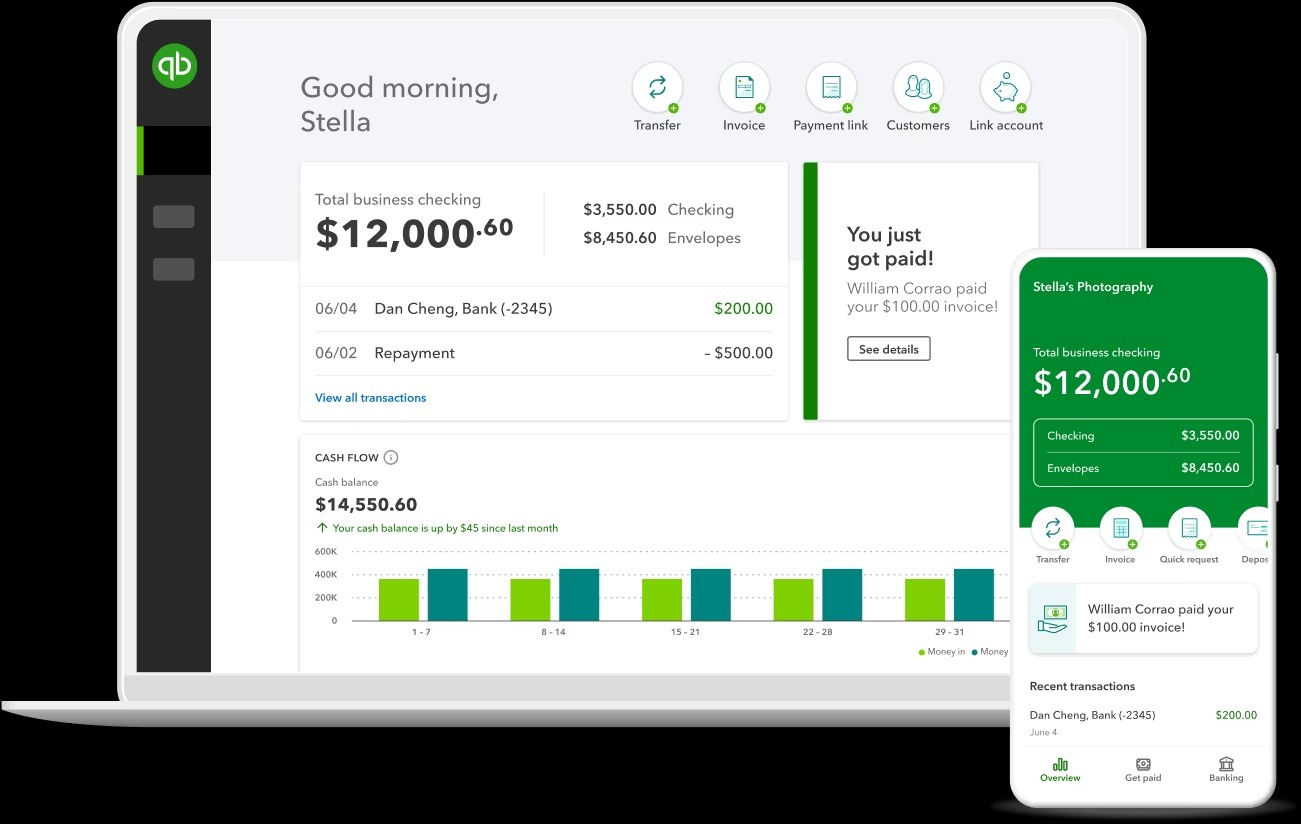

Finance
How To Charge Customer For Merchant Fee
Published: February 23, 2024
Learn how to effectively charge customers for merchant fees and optimize your finance strategy to maximize profits. Gain valuable insights and tips on managing merchant fees efficiently.
(Many of the links in this article redirect to a specific reviewed product. Your purchase of these products through affiliate links helps to generate commission for LiveWell, at no extra cost. Learn more)
Table of Contents
Introduction
In today's digital age, where cashless transactions are becoming increasingly prevalent, merchants often find themselves grappling with the burden of merchant fees incurred from processing credit and debit card payments. These fees, charged by payment processors such as banks and financial institutions, can significantly impact a business's bottom line. As a result, many merchants are exploring the option of passing these fees on to their customers.
Implementing customer merchant fee charges can be a complex decision, as it involves navigating the delicate balance between maintaining customer satisfaction and ensuring the financial sustainability of the business. This article delves into the intricacies of merchant fees, explores the various options for charging customers for these fees, and provides best practices for successful implementation. By gaining a comprehensive understanding of this process, merchants can make informed decisions that benefit both their customers and their business.
As we embark on this exploration of customer merchant fee charges, it's crucial to recognize the evolving landscape of payment processing and the pivotal role it plays in the modern economy. Let's delve into the world of merchant fees and the strategies for effectively managing and implementing customer charges to offset these expenses.
Understanding Merchant Fees
Merchant fees, also known as credit card processing fees, are the charges imposed by payment processors for handling electronic transactions. These fees are typically incurred when customers make purchases using credit or debit cards, and they can encompass a variety of costs, including interchange fees, assessment fees, and markup fees from the payment processor.
Interchange fees, set by card networks such as Visa and Mastercard, are a fundamental component of merchant fees. They are paid by the merchant’s bank to the customer’s bank as compensation for the transaction. Assessment fees, also determined by the card networks, contribute to the overall merchant fee and are collected for network usage. Additionally, payment processors add markup fees to cover their operational costs and generate profits.
It’s essential for merchants to comprehend the impact of these fees on their revenue streams. The percentage-based nature of merchant fees means that the higher the transaction amount, the greater the fee incurred. Consequently, businesses processing a significant volume of card transactions can face substantial costs, potentially affecting their profitability.
Moreover, the structure of merchant fees can vary based on the type of card used for the transaction. Credit cards with rewards programs or premium benefits often carry higher interchange fees, further amplifying the financial burden on merchants. Debit card transactions, on the other hand, generally incur lower fees due to their direct linkage to the customer’s bank account.
Understanding the intricacies of merchant fees empowers merchants to make informed decisions about how to manage and offset these expenses. By gaining insight into the components and determinants of merchant fees, businesses can explore strategies to mitigate their impact and optimize their payment processing operations.
Options for Charging Customer for Merchant Fees
When considering the implementation of customer merchant fee charges, merchants have several options to navigate this process effectively while maintaining transparency and customer satisfaction.
Surcharge: One approach is to apply a surcharge, where a percentage-based fee is added to the total transaction amount when customers choose to pay with a credit or debit card. This surcharge covers the merchant’s cost of processing the electronic payment and is explicitly disclosed to the customer at the point of sale. It’s important to note that surcharging regulations vary by region and payment network, so merchants must adhere to applicable laws and guidelines.
Cash Discount: Alternatively, merchants can offer a cash discount to customers who choose to pay with cash or an alternative non-card payment method. This approach involves setting a higher price for goods or services when purchased with a card and a lower price for cash transactions, effectively offsetting the merchant fees without directly charging the customer for the processing costs.
Minimum Purchase Amount: Implementing a minimum purchase amount for card transactions is another option for managing merchant fees. By setting a threshold for card payments, merchants can ensure that the cost of processing smaller transactions is proportionate to the revenue generated, thereby mitigating the impact of fees on low-value sales.
Flat Convenience Fee: Some businesses opt to impose a flat convenience fee for card transactions, regardless of the purchase amount. This fixed fee, clearly communicated to customers, is designed to offset the merchant’s processing costs and streamline the management of electronic payments.
Each of these options presents distinct advantages and considerations, and the most suitable approach depends on the nature of the business, customer preferences, and regulatory requirements. By evaluating these options in the context of their specific operations, merchants can make informed choices that align with their financial objectives and customer-centric ethos.
Best Practices for Implementing Customer Merchant Fee Charges
Implementing customer merchant fee charges necessitates a strategic and customer-centric approach to ensure transparency, compliance, and positive customer experiences. By adhering to best practices, merchants can effectively introduce these charges while mitigating potential friction and fostering trust with their clientele.
Transparent Communication: Clear and upfront communication is paramount when introducing customer merchant fee charges. Merchants should prominently display information about the fees, including the applicable payment methods, at the point of sale and on their digital platforms. Transparent signage and disclosures help set appropriate expectations and minimize customer surprises.
Compliance with Regulations: It is imperative for merchants to stay abreast of regional and industry-specific regulations governing the implementation of customer merchant fee charges. Compliance with surcharging laws, if applicable, is essential to avoid legal repercussions and maintain ethical business practices. Additionally, adherence to card network rules and guidelines is crucial for ensuring a seamless and compliant implementation process.
Customer Education: Educating customers about the rationale behind customer merchant fee charges can foster understanding and acceptance. Providing clear explanations, both in-store and on digital platforms, can help customers appreciate the costs associated with card transactions and the value of the goods or services provided. Empowering customers with knowledge can contribute to a more positive reception of the fee structure.
Offering Payment Alternatives: While implementing customer merchant fee charges, merchants should strive to offer diverse payment options to accommodate varying customer preferences. Providing incentives for non-card payment methods, such as cash or mobile wallets, can mitigate resistance to the fees and enhance the overall payment experience for customers.
Continuous Evaluation and Feedback: Regularly assessing the impact of customer merchant fee charges and soliciting feedback from customers can inform ongoing improvements. Monitoring customer sentiment, transaction patterns, and the overall effectiveness of the fee structure enables merchants to adapt and optimize their approach, ensuring that it remains aligned with customer expectations and business objectives.
By embracing these best practices, merchants can navigate the implementation of customer merchant fee charges with a customer-centric mindset, fostering transparency, compliance, and positive relationships with their clientele.
Conclusion
The landscape of payment processing is evolving, and merchants are increasingly confronted with the impact of merchant fees on their bottom line. As businesses seek to manage these costs while maintaining financial sustainability, the consideration of charging customers for merchant fees has become a pivotal decision.
Understanding the intricacies of merchant fees, including interchange fees, assessment fees, and markup fees, is essential for merchants to grasp the financial implications of electronic transactions. The varying cost structures associated with different card types further underscore the complexity of managing merchant fees.
When contemplating the implementation of customer merchant fee charges, merchants have several options at their disposal, including surcharging, offering cash discounts, setting minimum purchase amounts, and imposing flat convenience fees. Each approach presents distinct considerations and regulatory nuances, necessitating careful evaluation in alignment with the business’s operational context and customer preferences.
Embracing best practices for implementing customer merchant fee charges is crucial to ensure a seamless and customer-centric transition. Transparent communication, compliance with regulations, customer education, offering payment alternatives, and continuous evaluation and feedback are foundational principles that guide merchants in navigating this process while fostering trust and understanding with their clientele.
Ultimately, the successful implementation of customer merchant fee charges hinges on a delicate balance between financial prudence and customer satisfaction. By approaching this decision with strategic foresight, transparency, and a commitment to customer-centricity, merchants can effectively manage merchant fees while nurturing positive relationships with their customers.
As the payment processing landscape continues to evolve, merchants embarking on this journey are poised to navigate the complexities of merchant fees with agility and foresight, ensuring a sustainable and harmonious approach to electronic transactions.














